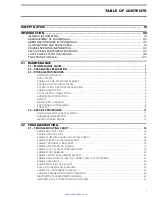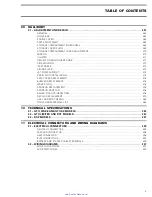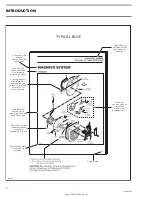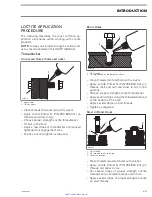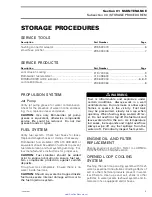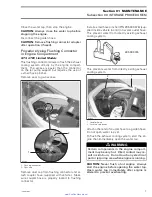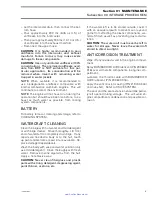
INTRODUCTION
ENGINE EMISSIONS
INFORMATION
Manufacturer's Responsibility
Beginning with 1999 model year engines, PWC
manufacturers of marine engines must determine
the exhaust emission levels for each engine horse-
power family and certify these engines with the
United States of America Environmental Protec-
tion Agency (EPA). An emissions control informa-
tion label, showing emission levels and engine
specifications, must be placed on each vehicle at
the time of manufacture.
Dealer Responsibility
When performing service on all 1999 and more
recent Sea-Doo watercrafts that carry an emis-
sions control information label, adjustments must
be kept within published factory specifications.
Replacement or repair of any emission related
component must be executed in a manner that
maintains emission levels within the prescribed
certification standards.
Dealers are not to modify the engine in any man-
ner that would alter the horsepower or allow emis-
sion levels to exceed their predetermined factory
specifications.
Exceptions include manufacturer's prescribed
changes, such as altitude adjustments for exam-
ple.
Owner Responsibility
The owner/operator is required to have engine
maintenance performed to maintain emission
levels within prescribed certification standards.
The owner/operator is not to, and should not al-
low anyone to modify the engine in any manner
that would alter the horsepower or allow emis-
sions levels to exceed their predetermined factory
specifications.
EPA Emission Regulations
All new 1999 and more recent Sea-Doo water-
crafts manufactured by BRP are certified to the
EPA as conforming to the requirements of the
regulations for the control of air pollution from
new watercraft engines. This certification is con-
tingent on certain adjustments being set to factory
standards. For this reason, the factory procedure
for servicing the product must be strictly followed
and, whenever practicable, returned to the origi-
nal intent of the design.
The responsibilities listed above are general and
in no way a complete listing of the rules and regu-
lations pertaining to the EPA requirements on ex-
haust emissions for marine products. For more
detailed information on this subject, you may con-
tact the following locations:
VIA U.S. POSTAL SERVICE:
Office of Mobile Sources
Engine Programs and Compliance Division
Engine Compliance Programs Group (6403J)
401 M St. NW Washington, DC 20460
VIA EXPRESS or COURIER MAIL:
Office of Mobile Sources
Engine Programs and Compliance Division
Engine Compliance Programs Group (6403J)
501 3
rd
St. NW Washington, DC 20001
EPA INTERNET WEB SITE:
http:/www.epa.gov/omswww
SELF-LOCKING FASTENERS
PROCEDURE
The following describes the most common appli-
cation procedures when working with self-locking
fasteners.
Use a metal brush or a screwtap to clean the hole
properly then use a solvent (Methyl-Chloride), let
act during 30 minutes and wipe off. The solvent
utilization is to ensure the adhesive works proper-
ly.
XII
smr2005-002
www.SeaDooManuals.net




